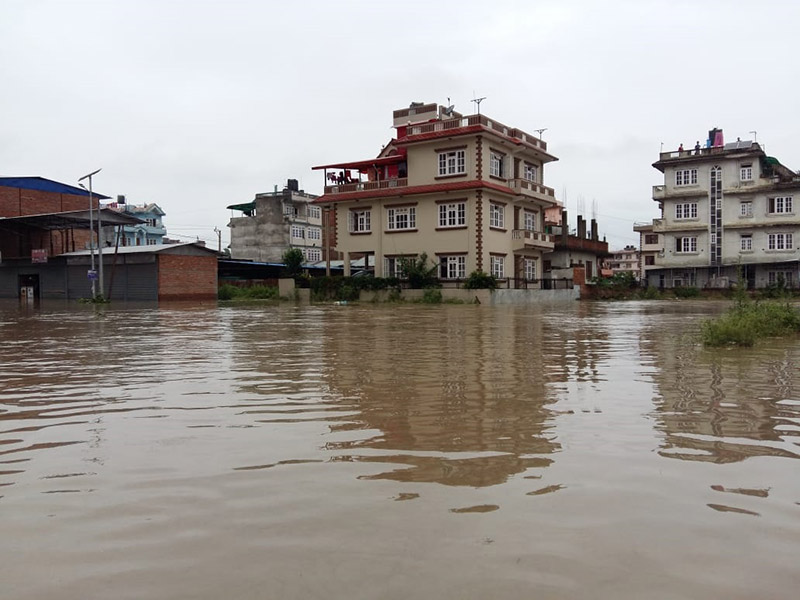Flood in Hanumante puts Bhaktapur at risk of hepatitis E outbreak
Flooding has contaminated drinking water in the area
Kathmandu, August 6
Doctors have said that flood triggered by incessant rain in the Hanumante River has increased chances of hepatitis-E outbreak in Bhaktapur.
According to Dr Sher Bahadur Pun, coordinator of Clinical Research Unit at Sukraraj Tropical and Infectious Disease Hospital, Teku, some people from Bhaktapur had tested positive for Hepatitis-E of late. He said, “One person with hepatitis E is enough to cause an outbreak,”
Speaking to The Himalayan Times, Dr Pun said, “Recently, one person from Bhaktapur Thimi had tested positive for hepatitis E.
Hepatitis E virus spreads when a person ingests faecal matter through contaminated water and food. Recent floods that gushed into human settlements have contaminated drinking water in the area, which has increased the chances of hepatitis E outbreak, said Pun, adding that people must drink boiled water and eat fresh food and maintain hygienic practices such as hand-washing with safe water to avoid the risk of infection.
In rare cases, acute hepatitis E can be severe, and results in fulminant hepatitis (acute liver failure); these patients are at risk of death. Fulminant hepatitis occurs more frequently when hepatitis E occurs during pregnancy. Pregnant women with hepatitis E, particularly those in the second or third trimester, are at an increased risk of acute liver failure, foetal loss and mortality. Case fatality rates as high as 20 to 25 per cent have been reported among pregnant women in their third trimester.
“Hepatitis E is a virus that infects the liver. It can cause the liver to swell. Most people with hepatitis E get better within a few months. Usually it doesn’t lead to long-term illness or liver damage like some other forms of hepatitis do. But hepatitis E can be dangerous for pregnant women or anyone with weak immune system, including the elderly or people who are ill,” he informed.”






